
Solar Eclipse Dry Run
Posted: 18 May 2012
I opened the observatory Thursday, 17 May 2012, at 1701 MST, 103°F, for a dry run in preparation for Sunday's Solar Eclipse. Northern Arizona will see the full Annular Solar Eclipse; maximum eclipse at my location will be about 82%. The Meade 8" LX200-ACF had an Orion full-aperture solar filter and a Coronado PST was mounted piggyback. I also set up the Meade ETX-90RA with a Coronado White Light Solar Filter and the Nikon D7000 DSLR using a Thousand Oaks Solar Filter (made for the ETX-90). An Apple iPhone 4 would be mounted on the ETX-90RA using the Magnilux MX-1 Afocal Adapter. The photo below (taken with the iPhone) shows the setup, with the SkyShed POD observatory (partially hidden by a tree) open.
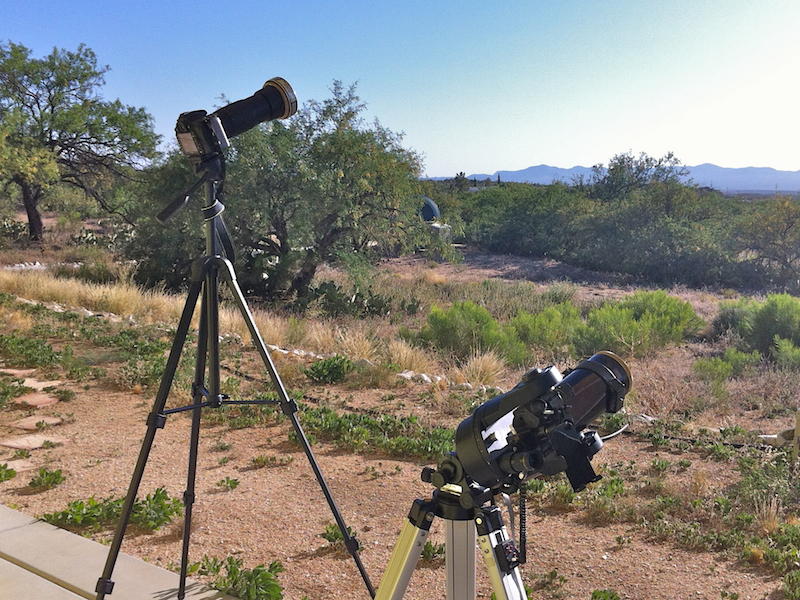
The sky was clear for the dry run but there was a strong wind blowing, with stronger gusts. By 1724 MST, all was in readiness for the simulated partial phase to start at 1730 MST (actual time for the eclipse start on 20 May). I began imaging at 1732 MST, and continued taking images every 10 minutes, as I plan to do during the actual eclipse. This allowed me to check the exposure values on the D7000 DSLR, as well as how well the iPhone Camera app performed on the ETX-90. Maximum eclipse will occur at 1839 MST and during my simulation, the sun was high enough in the sky for good imaging. I continued imaging until the sun set, which will be after max eclipse on Sunday. The following images are just some of the 50 photographs I took during the "simulated eclipse". Most of the images have been changed to black and white, and cropped. iPhone images are square and D7000 images are rectangular. Several small sunspots are visible on many of the images.
Start of "Simulated Eclipse"
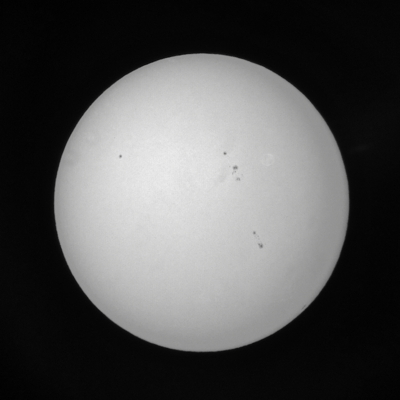
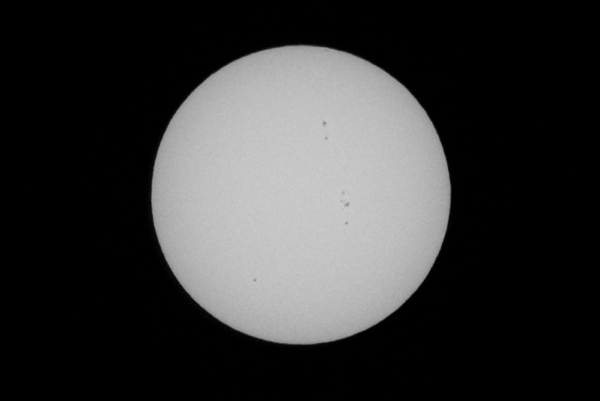
End of "Simulated Eclipse" as the Sun Set
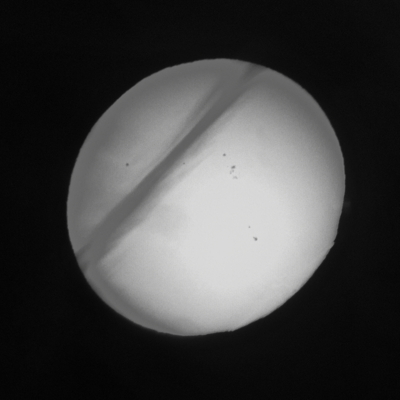
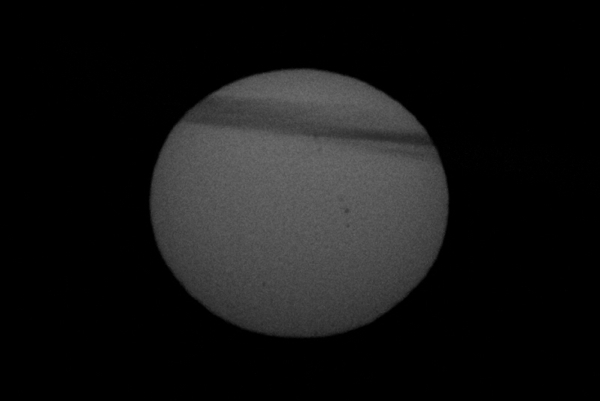
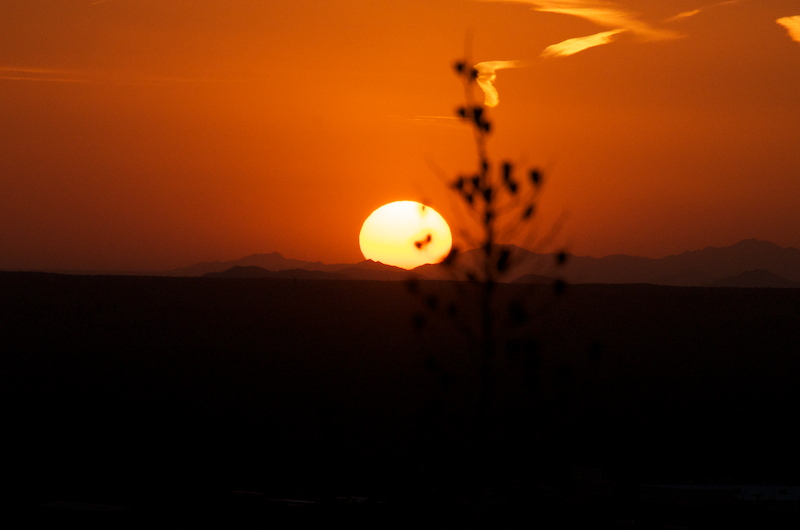
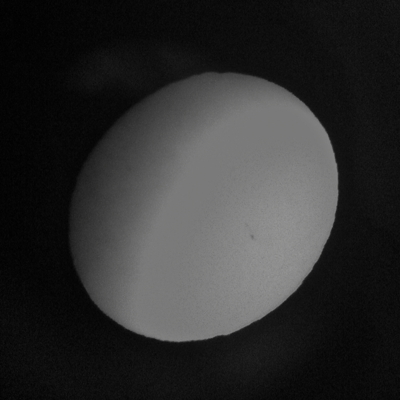
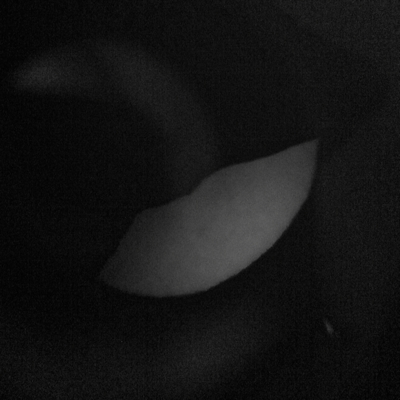
D7000 DSLR exposure settings for most of the "eclipse" was f/8, 1/1000sec, ISO 1000, 300mm focal length lens, however as sunset approached, the best filtered images were taken at f/5.6, 1/250sec, ISO 1000. The unfiltered sunset photo above was taken at f/5.6, 1/5000sec, ISO 2000. All of the iPhone images were "auto-exposure".
Besides the camera exposure setting test exposures I made during the "simulated eclipse", I learned two other very valuable things from my dry run. I had planned to move back and forth from the observatory to the patio where the cameras were set up during the "eclipse", but the strong wind prevented me from doing that as I was concerned that the wind would blow the tripods over. One gust did move the heavier ETX-90 tripod slightly! But at one point I made a dash to the observatory and learned that its location would lose the sun behind a low tree at about 1812 MST. The other thing I learned was that my patio setup for the cameras was a few feet slightly too far to the north. Notice the tall yucca plant in the color sunset photograph above; as the sun got lower in the sky during the "simulated eclipse", it was behind this plant for some of the images with both cameras. I will set up the cameras about 6 feet further south for the actual eclipse.
Based on what I learned and the experience gained, the 2.5 hours I spent on the dry run were well worth the time. I plan to do a similar dry run in preparation for the Transit of Venus on 5 June 2012.
Closed the observatory at 1931 MST, 79°F.
Comments are welcome; use the Comments section below, or you can Email Me. Thanks.
Go to the previous report.
Return to the Cassiopeia Observatory Welcome Page.